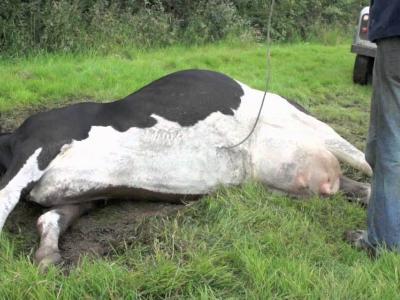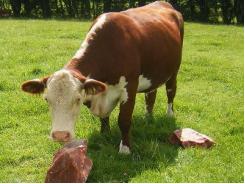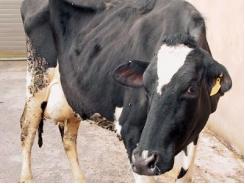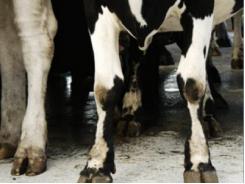Cow Health: Milk fever in cows

Milk fever is a metabolic disorder caused by insufficient calcium. Magnesium plays an important role in milk fever prevention (calcium deficiency).
Magnesium is required for the production of hormones that are important for the absorption of calcium (Ca)from the gut and the mobilisation of Ca from bones.
Supplementing with magnesium for two to three weeks pre-calving will reduce the risk of milk fever, however it does not build up a store of magnesium.
Magnesium supplementation pre-calving
Supplementing with Magnesium sulphate or Magnesium chloride before calving is more likely to prevent milk fever than using Magnesium oxide. However it can be difficult to supply cows with enough Magnesium when using either Magnesium sulphate or Magnesium chloride. Therefore dust pastures with Magnesium oxide as well, to ensure the cows receive enough magnesium, not just the correct type.
One way to achieve the required dietary Magnesium concentration pre-calving is to add 60 grams of Magnesium chloride or Magnesium sulphate into the water trough and dust pastures with 50 to 70 grams of Magnesium oxide per cow per day as well.
Supplement with magnesium until after spring pasture growth rates have slowed (December). Use blood tests to determine if continued supplementation is required from December onward.
Magnesium requirements are also affected by the levels of potash and calcium in the diet. Some farms with very high potash levels in pasture will require high rates of magnesium supplementation.
Applying potassium fertiliser or lime within three months of calving can affect cow magnesium levels at calving. Where magnesium is added to water and dosage is not accurate there is a risk of the water becoming toxic and stock refusing to drink.
For more information refer to DairyNZ FarmFact: Mangnesium supplementation (3-1)
Dietary magnesium concentrations and quantity of supplementary magnesium required (g/cow/day)
| Mg requirement (% of diet) | Supplementary Mg | Supplementary Mg | Supplementary Mg | |
| Jersey (g/cow/day) | J x F (g/cow/day) | Friesian (g/cow/day) | ||
| Dry | 0.35% | 12 | 16 | 20 |
| Lactating | 0.28% | 15 | 17 | 20 |
Quantities of magnesium sources to supply the required amounts of pure magnesium (down the throat)
| Magnesium source (% Mg) | Example product | 12g | 14g | 16g | 18g | 20g |
| Mg Oxide (55%) | CausMag | 22 | 25 | 29 | 33 | 36 |
| Mg Sulphate (10%) | Epsom Salts | 122 | 142 | 162 | 182 | 202 |
| Mg Chloride (12%) | Mag chloride | 100 | 117 | 134 | 151 | 167 |
If dusting CausMag on pasture, need to at least double, possibly triple, the above to allow for field losses. When mixing with feed, double the rates above.
Amount of CausMag dusted (g/cow/day)
| 12g | 14g | 16g | 18g | 20g | ||
| Mg Oxide (55%) | Double rate | 44 | 50 | 60 | 66 | 72 |
| Mg Oxide (55%) | Triple rate | 66 | 78 | 90 | 100 | 108 |
Tools

Phối trộn thức ăn chăn nuôi

Pha dung dịch thủy canh

Định mức cho tôm ăn

Phối trộn phân bón NPK

Xác định tỷ lệ tôm sống

Chuyển đổi đơn vị phân bón

Xác định công suất sục khí

Chuyển đổi đơn vị tôm

Tính diện tích nhà kính

Tính thể tích ao




 Cow Health: Johne's Disease in cow
Cow Health: Johne's Disease in cow  Cow Health: Ketosis in the cow
Cow Health: Ketosis in the cow